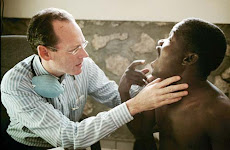2. What are the main pathways by which energy from the sun enters photosynthetic organisms and passes from organism to organism and/or back into the environment?
See Figure 7.12 page 118
In this answer you only need to discus the relationship between photosynthesis and cellular respiration. What is made in photosynthesis is used in cellular or aerobic respiration and what is produced in aerobic respiration is used in photosynthesis.
Photosynthesis makes glucose and oxygen which are used in aerobic respiration.
Aerobic Respiration makes carbon dioxide and water which is used in photosynthesis.
A discuss of trophic levels and how energy is passed from the sun to primary consumers, secondary consumers, and decomposers makes your answer more complete and a discussion that energy is lost at each trophic level.
Question 3: What are the steps of the light dependent and light independent reactions. What are the raw materials (reactants) needed to start each step, the products made by each step, and where in the plant each step occurs.
You could begin to answer this question with a summary of both steps:
Light Reaction Occurs in Thylakoid Membrane Requires Sunlight and Water Produces ATP, NADPH, and Oxygen
Dark Reaction Occurs in Thylakoid Membrane Requires carbon dioxide, ATP NADPH Produces Glucose
The response could then go into more specific details:
Light Reaction
1. Light hits photosystem II - photons of light energy are absorbed.
2. Water is split into oxygen and hydrogen.
3. Oxygen leaves the plant through the stomata.
4. Hydrogen build up across the membrane.
5. Electrons are passed down the electron transport chain.
6. Light hits photosystem I and drives electrons down the electron transport chain.
7. Hydrogen is passed through ATP ase protein channel forming ATP from ADP.
8. The energy from the Electron transport chain allows NADPH to form from NADP and the free hydrogens that have entered the stroma.
ATP and NADPH are used in the Light Independent Reaction
Light Independent Reaction
1. Carbon Dioxide combines with RuBP to form 2 PGA
2. 2 ATP and 2 NADPH are used to make 2 PGAL
3. PGAL is converted to RuBP using 1 ATP.
4. It takes six turns of the Calvin Benson Cycle to produce 1 glucose molecule.
Subscribe to:
Post Comments (Atom)




No comments:
Post a Comment